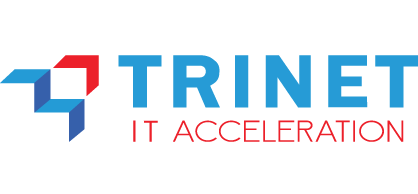Tech Innovation > Security > Extended Detection & Response (XDR) & Managed Detection & Response (MDR)

Extended Detection & Response (XDR) & Managed Detection & Response (MDR)
Without an XDR/MDR solution, organizations face the following risks:
Phishing & Credential Stuffing Attacks Leading to Identity Theft
Phishing and credential stuffing attacks result in identity theft and unauthorized access to accounts.
Unmonitored Access to Sensitive Applications and Data by Internal & External Parties
Lack of oversight over access to sensitive applications and data poses significant security risks from both internal and external parties.
Non-Compliance with Data Security Regulations such as GDPR, ISO 27001, and PDP Laws
Failure to comply with data security regulations can result in fines and legal issues for the organization.
Open Access Even After Employees or Business Partners Leave
Access remains open to sensitive systems and data even after employees or business partners are no longer associated with the organization.

Key Features & Capabilities
XDR & MDR enable advanced threat detection, automated response, and proactive security monitoring.
Show Details
a. Extended Threat Detection & Automated Response
- Threat Intelligence Integration: Leverage multiple global threat intelligence sources to improve detection accuracy.
- Real-Time Threat Correlation & Contextual Analysis: Connects security data from endpoints, networks, cloud, and email to provide full visibility into threats.
- AI-Powered Behavior Analysis: Using machine learning to detect suspicious anomalous behavior.
b. Advanced Attack Surface Protection
- Zero Trust & Identity Threat Protection: Protect user accounts and access from identity-based exploits.
- Deception Technology & Active Threat Hunting: Trapping hackers with honeypots and decoys to identify the attack techniques used.
- SIEM & SOAR Integration: Optimizing threat analytics and incident response automation.
c. Fully Managed Security Operations (MDR)
- 24/7 SOC Monitoring & Incident Response: A security team that is always ready to handle threats in real time.
- Post-Incident Forensics & Threat Containment: Investigate, isolate, and remove threats quickly to prevent further spread.
- Automated Threat Remediation & Policy Enforcement: Automatically enforce security policies based on detected risk levels.
-
High-Speed Threat Resolution SLA:
- 1 Minute Detection → The system detects and validates threats in less than a minute.
- 5 Minute Investigation → The incident is immediately analyzed to determine the mitigation steps that need to be taken.
- 30 Minutes Remediation → Threats identified immediately isolated and treated within time less than 30 minutes.

Business Benefits
XDR & MDR enhance security by detecting threats early and automating response actions.
Show Details
a. Faster & More Accurate Incident Detection & Response
- Reducing dwell time (the time a hacker is present in the system) from an average of 287 days into a matter of minutes.
- Avoid financial losses due to data breaches with quick reaction to threats.
b. Reducing the Burden on IT Security Teams
- Reduce false positives by up to 95%, eliminating fatigue due to too many irrelevant warnings.
- Improve operational efficiency with automation of incident investigation and threat mitigation.
c. Ensuring Compliance with Regulations & Security Standards
- Comply with global safety standards like ISO 27001, NIST, GDPR, PCI DSS, and PDP Act with automatic audit logs.
- Prevent fines due to non-compliance with continuous security monitoring.
d. Reduce the Cost & Complexity of Security Operations
- Consolidation of multiple security solutions into one integrated platform to reduce licensing and system management fees.
- Eliminate the need to build an internal SOC, thus saving resources, power, and time.

Use Cases
XDR & MDR provide advanced threat detection and automated response across industries.
Show Details
a. Banking & Finance
- Protecting customer transactions and information from targeted cyber attacks.
- Detecting & responding to fraud threats automatically with real-time analysis.
b. Health Services
- Preventing theft of patient data from electronic medical record (EMR) systems.
- Using behavior-based analytics to detect unauthorized access.
c. E-Commerce & Retail
- Securing customer credit card information from skimming and fraud.
- Using threat intelligence to detect attack attempts on payment systems.
d. Government & Critical Infrastructure
- Preventing attacks on national IT infrastructure and sensitive government data.
- Securing government networks from identity-based cyber attacks and zero-day exploits.

How It Works
How XDR and MDR Work to Protect Against Cyber Threats and Enhance Incident Response:
Show Details
a. Data Collection & Correlation
- XDR collects data from various sources, including endpoints, networks, email, cloud, and user identities.
- The system correlates and analyzes all security data to identify suspicious attack patterns.
b. Threat Detection & Behavioral Analytics
- Utilizes AI and Machine Learning to detect anomalous behaviors that could indicate cyber-attacks.
- Leverages Threat Intelligence Feeds to identify emerging threats.
c. Real-Time Incident Response & Containment
- When a threat is detected, the system automatically isolates infected devices, blocks malicious IPs, or limits access for high-risk users.
- SOAR executes automated response playbooks for rapid incident mitigation.
d. Security Operations Center (SOC) 24/7
- MDR ensures that the SOC team continuously monitors and responds to threats in real-time.
- Expert teams perform triage, further investigations, and digital forensics to determine the best mitigation steps.
e. Post-Incident Analysis & Continuous Improvement
- After an incident is handled, the system conducts forensic analysis to identify the root cause of the attack.
- Security policies are updated to prevent similar attacks in the future.
Contact our experts for further information












